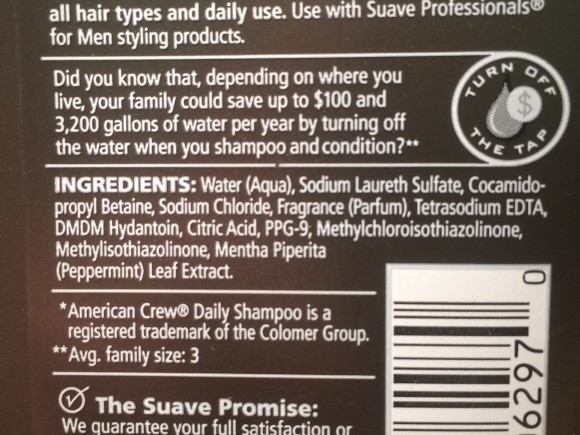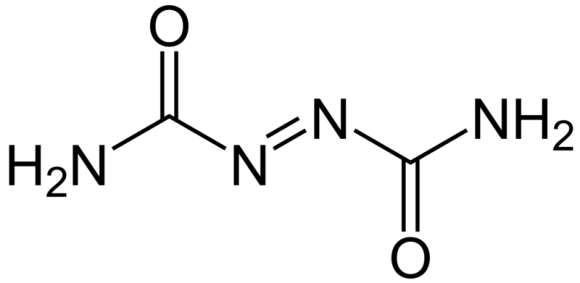Today I logged into Facebook, and near the top of my newsfeed was a link to an article that caught my eye. It was entitled “8 Beers That You Should Stop Drinking Immediately” from the website www.organics.org. In fact, this article has been shared so many times on Facebook today alone that the website has crashed due to the high traffic volume and has not yet been resorted at the time of this posting. The link was shared by one of my old high school teachers, and below it there were already a few comments thanking him for sharing such valuable information. What toxins could these adult beverages possibly contain—what ingredients could be so harmful to be warranted by such a fear-imbuing title? I decided to investigate—immediately! Lest someone consume one more bottle of these fermented killers.
At this time the only form of the webpage to which I have access is a Google cached version of the page from shortly before the website crashed. Here’s a screenshot of the article’s introduction:
The article proclaims, “All the work for your body can be ruined in a weekend out,” apparently as a result of harmful ingredients found in beer—“a HUGE mistake.” A Google search turned up a similar article from a website named foodbabe.com. Both articles enumerate the harmful ingredients we should avoid. Many of the listed harmful ingredients in the article are indeed controversial, from genetically modified organisms (GMOs) to high fructose corn syrup and BPA. But what the article fails to mention is that, although these substances are controversial, they are found in a multitude of other foods that are commonly consumed in much greater quantities than beer. In essence, the premise of the entire article, claiming the harmful ingredients consumed from beer can ruin your body’s well-being, is a bit of a hyperbole with one blatant omission—the ingredient in beer that is most likely to do your body harm is the alcohol itself. So if you’re concerned about the harmful effects of caramel coloring in beer, it might be wiser to worry about getting alcohol poisoning from consuming the enormous volume of beer necessary for the caramel coloring to have an effect. Or just avoid everything else in your diet that has caramel coloring (hint: it would be difficult). So without further ado, let’s take a look at some of the ingredients and where they occur in much high quantities in a typical diet.
GM Corn – Do you eat corn or anything made from corn? Yes? Then if you live in the United States you probably eat genetically modified corn, considering the 90% of corn grown in the United States is of genetically modified varieties. Studies on the potential health effects of GM crops are ongoing, but no definitive links to adverse health effects have yet been proven.
Fish Bladder – Not as gross as it sounds. The article leaves out the key detail that it is the swim bladder of the fish that is used, not the type of bladder most people think of. The swim bladder in a fish stores air, which helps the fish control how much it floats—not fish waste, as the title might have you believe. Guinness uses it in the form of a powder to clarify their beer—the powder is filtered out after it does its job.
Propylene Glycol – The foodbabe.com article describes it as “an ingredient found in anti-freeze.” Well, kind of, but not. The problem with that description is that there is no one substance called “anti-freeze.” Many different chemicals can act as anti-freezes because they don’t freeze—a property that is not directly correlated with their toxicity. Ethylene glycol is a poisonous antifreeze, but propylene glycol is specifically used as a non-toxic anti-freeze. And just because it has properties that enable it to be effective as an antifreeze doesn’t mean it can’t perform other functions as well—it is labeled by the US Food and Drug Administration as GRAS (Generally Regarded as Safe) as a food additive.
Caramel Coloring – Another controversial substance as a result of the use of various acids and bases in its production, such as hydrochloric acid and ammonia. It is most commonly found in any type of dark colored beverages, such as colas and root beers, and it is one of the most widely used colorings in food products. It is also used to color breads, chocolate, cookies, liquors, and sometimes potato chips, as well as a long list of other foods, although there are different classes of the coloring that can be used in different types of foods.
The safety of some of the listed ingredients is indeed up in the air, and more scientific research is certainly necessary for further investigation—I can’t dispute that. However, it is extremely difficult—near impossible—to prove that a substance is completely safe, and therefore proving 100% safety of a chemical used in foods (or any substance) should not be expected by the public.
I do, however, believe that the sources of articles such as these should be taken to task for their incomplete, evidence-lacking, and selective journalistic practices that seem focused solely on attaining shares, likes, and retweets instead of on spreading accurate, fact-checked information. Both articles show evidence of a lack of thorough background research or obvious omission of key details that would lessen the “impact” and “buzz” of the article. I call into question the ethics behind this type of journalism, as I believe that such articles serve to alter the public perception of chemists, the chemical industry, and the entire scientific community in a negative manner. Yes, some ingredients and food additives could potentially be dangerous, but if you’re going to publish a seemingly investigative article, at least for the benefit of your readership and society in general perform the basic background research necessary to cite relevant sources and provide more than two sentences about each substance instead of an (apparently successful) sensationalist attempt to increase web traffic. Or maybe hire a proofreader–take baby steps.
Sources:
www.organics.org/8-beers-that-you-should-stop-drinking-immediately/
http://foodbabe.com/2013/07/17/the-shocking-ingredients-in-beer/
http://umpir.ump.edu.my/3162/1/CD5934_KHALIZATUL_RADHIAH_KASIM.pdf
http://en.wikipedia.org/wiki/Genetically_modified_food
http://en.wikipedia.org/wiki/Antifreeze#Ethylene_glycol
http://en.wikipedia.org/wiki/Caramel_color
http://en.wikipedia.org/wiki/Swim_bladder


























Recent Comments